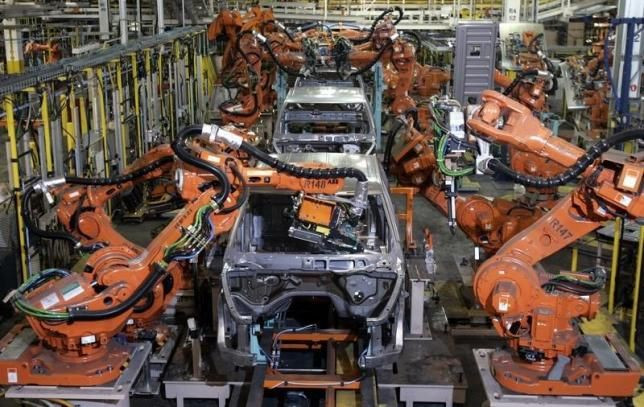US Hiring Seen Solid In June, Keeping September Rate Hike In Play

U.S. job growth likely cooled a bit in June after reaching a five-month high, but still-healthy hiring would suggest the labor market is strong enough to support a September interest rate increase by the Federal Reserve.
A Reuters survey estimated that nonfarm payrolls rose 230,000 last month after May's 280,000 jump, the largest gain since December.
Even with a slowdown from the prior month, June's increase would be well above the average for the first five months of the year and more than sufficient to keep up with population growth.
"What matters is the trend. We are making a lot of progress in reducing slack and unless the labor market weakens sharply, the Fed is on track to raise interest rates in September," said Ryan Sweet, a senior economist at Moody's Analytics in West Chester Pennsylvania.
The jobless rate is forecast to fall one-tenth of a percentage point back to a seven-year low of 5.4 percent, not far from the 5.0 percent to 5.2 percent range most Fed officials consider consistent with full employment.
The Labor Department's closely watched report, normally issued on a Friday, will be released on Thursday at 8:30 a.m. (1230 GMT) because of the Independence Day holiday.
Should the data meet expectations, it will be the latest indication the economy has rebounded from a first-quarter slump with a solid pace of growth during the April-June quarter.
From consumer spending to housing and consumer confidence, economic reports have had a decisively strong tone since May, prompting many forecasters to raise their second-quarter growth estimates to above a 3 percent annual pace. The economy contracted at a 0.2 percent rate in the first quarter.
"The accelerating economy looks like it is picking up even more steam. All components of the economy are now moving forward," said Joel Naroff, chief economist at Naroff Economic Advisors in Holland, Pennsylvania.
The tightening labor market is expected to exert moderate upward pressure on wages. Average hourly earnings are expected to rise 0.2 percent in June after increasing 0.3 percent in May. That would bring down the year-on-year increase to a tepid 2.2 percent, but anecdotal evidence and other measures of wage growth suggest paychecks are getting fatter.
State and local governments have raised the minimum wage and surveys show entry-level wages for new college graduates are rising. In addition, Walmart, the nation's largest private employer, has announced wage increases twice this year.
Economists expect little change in several other labor market measures Fed officials are eyeing as they contemplate raising rates for the first time since 2006.
Many of those gauges have shown the jobs market gaining strength.
The labor force participation rate, or the share of working-age Americans who are employed or at least looking for a job, increased to a four-month high in May as more people, including new college graduates, entered the market.
The number of discouraged workers in May was the lowest since October 2008, and the percentage of the working-age population employed reached the highest level in nearly six years.
Payroll gains in June are expected to be broad-based, with further gains in manufacturing and construction.
The mining sector, however, likely lost more jobs because of layoffs in the energy industry.
Oil-field companies, including Schlumberger, Baker Hughes and Halliburton, have announced thousands of job cuts after a more than 60 percent plunge in crude oil prices last year.
© Copyright IBTimes 2024. All rights reserved.




















